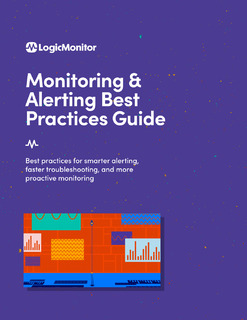Best practices for smarter alerting, faster troubleshooting, and more proactive monitoring
Alerting is an essential aspect of preventing downtime, but it can also be one of the most frustrating and time-consuming parts of your job.
This guide includes best practices that you can implement immediately to optimize your monitoring and alerting strategy. Following these best practices will help ensure three related outcomes:
- Monitoring is in place to catch critical conditions and alert the right people
- Noise is reduced and you or your team are not needlessly disrupted
- Time spent on alerts is reduced, enabling time for the things you’d rather be doing

